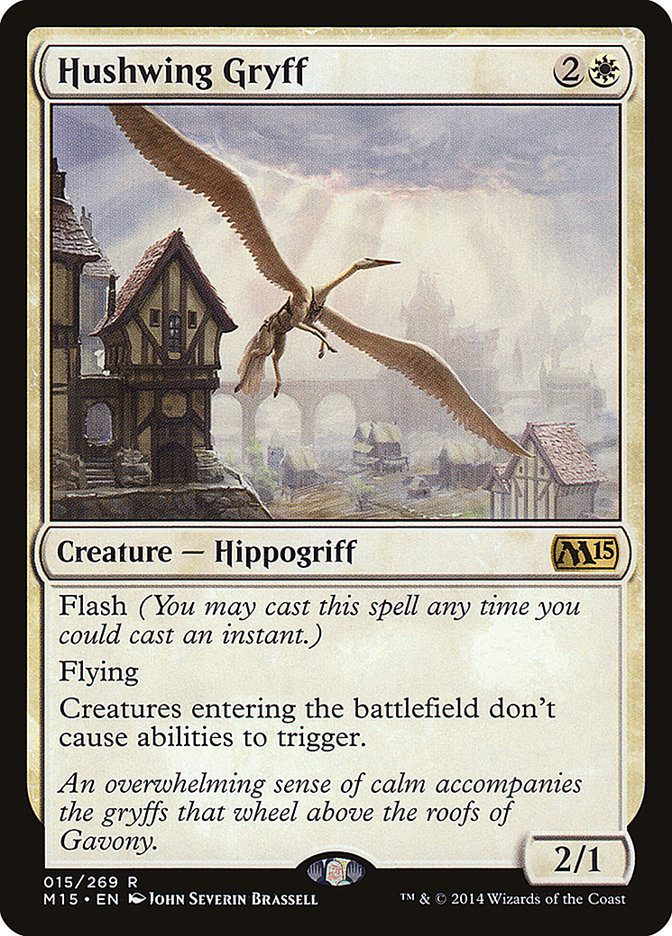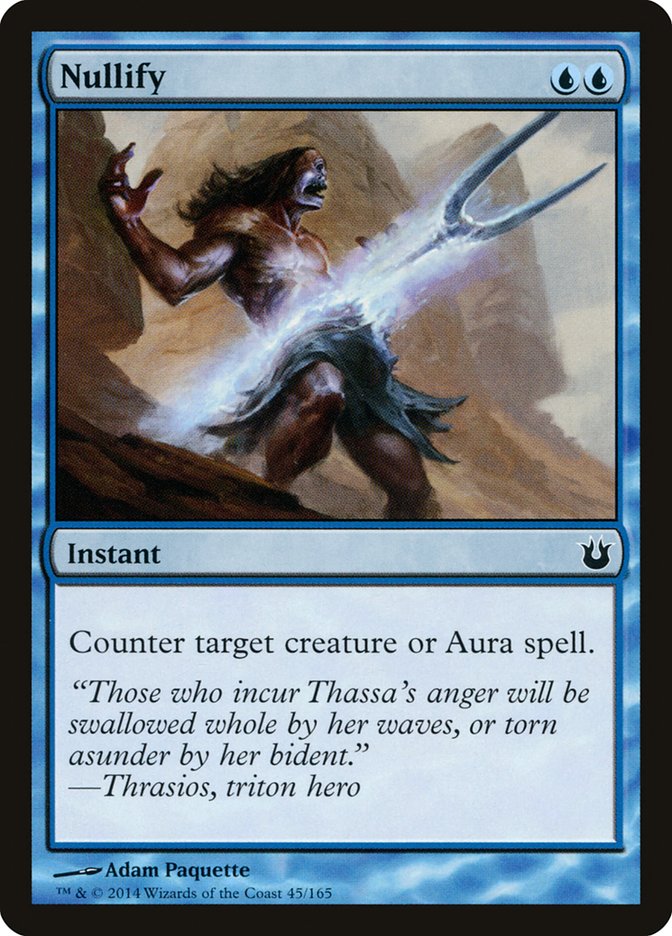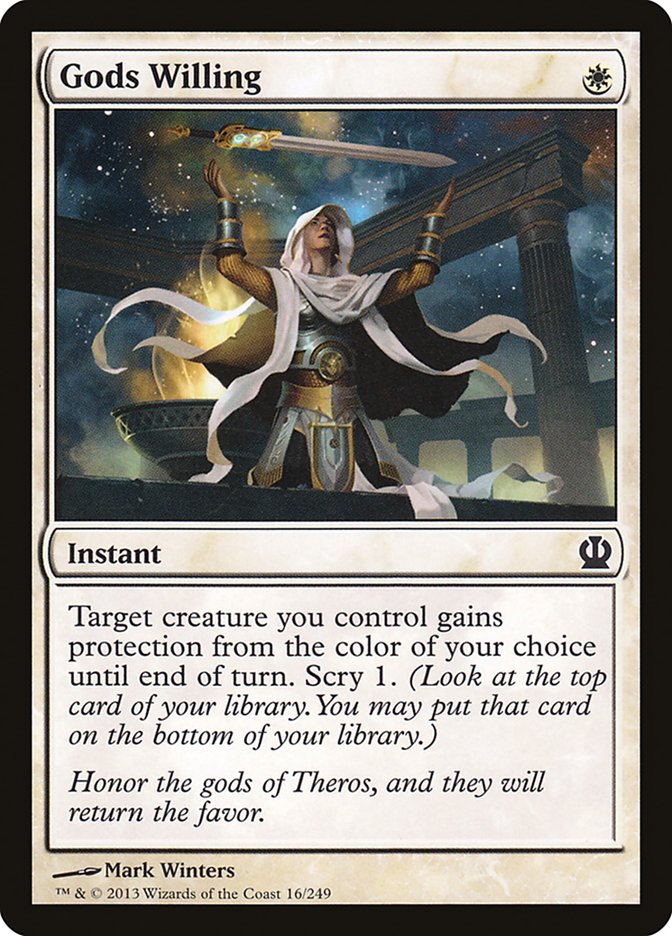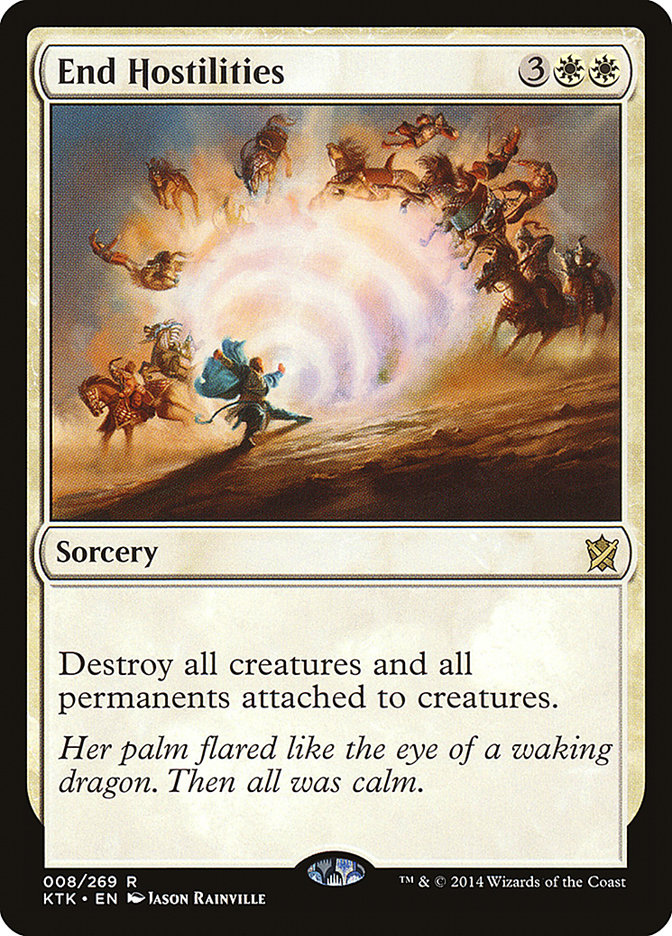Due to vacationing in Hawaii, I didn’t have a lot of time to test for GP Los Angeles (priorities). My plan had been to simply play G/B Devotion again
because it seemed like Abzan Midrange was very popular on Magic Online, and I liked that matchup if they didn’t have a lot of End Hostilities, which for
the most part, it seemed like they did not, especially due to the popularity of the Abzan Aggro deck. The night before the GP, Tom Martell told me he was
playing Jeskai Aggro with four Hushwing Gryffs, and I realized that there was a good chance that Hushwing Gryff would be a lot more popular at this GP than
it was at the PT, as Hushwing Gryff is outstanding against a green deck based on constellation and Hornet Queen. I decided it was too dangerous, especially
since we hadn’t done that well with the green deck at the PT anyway. So I asked Tom for his decklist, changed a few cards without testing, and
played that.
Before the PT, I played very few games with Jeskai. As always, I was spending most of my time trying to build new decks and settled for learning about
Jeskai by playing against it, where it was actually pretty impressive. I wish I’d played with it more. One of the things I look for most in a deck is the
ability to change rolls depending on the matchup, especially in sideboarding, but also just in each game. Jeskai is so good at this that no one has been
able to figure out how to classify it-StarCityGames has officially settled on calling it Jeskai Aggro, but I have a feeling that name might become
increasingly awkward as the deck develops. The shell of the deck is both outstanding and versatile, and the support cards can radically shift the typical
speed or strategic archetype of the deck. Ideally, each list might be classified individually based on what the last eight card slots say about what the
pilot intends, but even then, some will have sideboards that are designed to radically shift roles and some won’t, and that’s also important, and some will
split decisions on those last eight in ways that can be really confusing on paper. For this reason, I prefer the generic “Jeskai” as in original
“Jund”–the deck is at least as good at switching roles and defying strategic expectations as that deck was, to the point where any further descriptor is
usually actively misleading.
My unfamiliarity with the deck became apparent at the PT. I was sitting next to a match between Jadine Klomparens and Brad Nelson and periodically glancing
over at their match while playing mine. Jadine’s opening hand contained an aggressive curve of Seeker of the Way and Mantis Rider, but she did nothing on
turn 2 or turn 3. I’m embarrassed to admit that I had no idea why she wouldn’t just cast those. You put aggressive creatures in your deck so that you can
attack with them, and you can’t do that if they’re in your hand. There weren’t going to get better later, so what was going on? The answer was simple. She
didn’t know exactly what was in Brad’s R/W deck, but treated it like the Jeskai mirror. She knew Brad had a lot of cheap instant speed removal, and if she
tapped out, Brad could kill her creature and untap and play a Rabblemaster, and he would get a Goblin before she could kill it, and then because both decks
have about as much removal as they have creatures, she wouldn’t be able to count on sticking a creature, so she’d have to either waste a card dealing with
the 1/1 or take a damage every time she played a creature and Brad killed it.
This dynamic becomes abundantly clear if you play the Jeskai mirror match at all, where they have both Mantis Rider and Goblin Rabblemaster to punish you
for tapping out, and where a 1/1 creature is a lot more important than one might expect in most creature based matchups, where it often won’t really be
able to do anything. This is why Hordeling Outburst is a popular and successful card–Jeskai is very bad at dealing with it if the deck playing it has a
lot of removal. Now, in my defense, I thought Jadine was on the play (as I was only barely watching), at which point I think there’s no reason not to play
the Seeker of the Way, but it was still a fundamental dynamic of the deck that I didn’t know.
Fortunately, before the Grand Prix, I’d had this experience and I understood this dynamic. The goal in the mirror is to avoid tapping out when your
opponent has two untapped lands in play, as it will almost always end badly. This is why I was interested in playing the list Tom sent me:
Creatures (13)
Lands (24)
Spells (23)
- 3 Magma Jet
- 4 Lightning Strike
- 4 Nullify
- 1 Banishing Light
- 4 Stoke the Flames
- 4 Jeskai Charm
- 3 Dig Through Time
Sideboard

I understood cutting Goblin Rabblemaster for Hushwing Gryff. Hushwing Gryff has text that’s great against Abzan and Green Devotion, and flash is important
in the mirror. Also, including an instant speed threat makes it easier to use counterspells, which make Nullify good, which both helps with the fact that
the deck wants more two mana plays and the fact that it can be very bad against big green creatures like Siege Rhino and Arbor Colossus. I liked Prognostic
Sphinx at the top end in theory–there are a lot of decks that can just kill a red five drop like Stormbreath Dragon, but Prognostic Sphinx will live,
blocks well in the mirror, and easily finds burn spells to finish the opponent off quickly. It also worked well on the mana with prioritizing blue and
moving away from early red, which explains End Hostilities in the sideboard over Anger of the Gods, which seemed good to me anyway, since I knew that was
the way to beat green decks which could otherwise be close.
Goblin Rabblemaster can easily steal a game by itself, but when that doesn’t happen, it can be pretty horrible. It’s not a card I like to play, though I
recognize its strength and I don’t like to play against it either. This list is the beginning of what I see as the shift away from “Jeskai Aggro”–I get
that Goblin Rabblemaster is just an aggressive card. It says right on it that you have to attack, and it’s powerful enough to look like part of the core of
the deck, but when you’re not playing it and you add a bunch of counterspells to the deck and you cut a five drop with haste for a five drop with hexproof,
are you still an aggro deck? But if your deck still plays basically the same game with most of the same cards, are you really a different deck?
Despite liking the direction Tom’s deck was going, I had some concerns. Was it really easy to have two untapped blue mana on turn 2 with seven lands that
don’t tap for blue and ten lands that enter the battlefield tapped? Also, is Nullify going to be good? It’s completely blank against the U/B Control deck
that several of my teammates played at the Pro Tour. I decided to cut the Mountain for a Temple of Epiphany to help with the blue mana, but I also cut a
Nullify for a Disdainful Stroke and another Nullify for the fourth Seeker of the Way, which I think means I actually ended up with too much blue mana, and
I should have found a way to cut a blue source for a red source, like by cutting Temple of Enlightenment for Temple of Triumph, except that I wouldn’t want
to do that because I wouldn’t want to play Temple of Triumph on turn 1. The alternative would be replacing Flooded Strand with Battlefield Forge, but I
really didn’t want more painlands, so it’s possible the mana should just be like this, or that I should have just left the Mountain as a Mountain if I was
cutting the two Nullifies.
I went 11-4-1 in the actual Grand Prix, intentionally drawing myself out of a chance at a earning one pro point and $300 to guarantee earning $250 and no
points (my opponent and I collectively sold our shot at a point for $200, which is never a deal I would make before the cap, but I expect to have at least
six finishes by the end of the year anyway, so I didn’t think the point mattered). Overall, I loved the shell of the deck, and I could see myself playing a
lot more Jeskai in the future, but I didn’t necessarily love my exact list. It’s possible that there just aren’t options for the worst cards in the deck
that are ever going to be terribly impressive, and that the strength of the deck is just in the best cards it gets to play, but it was very clear that some
of my cards were a lot better than others. Not surprisingly, Mantis Rider, in particular, was outstanding.
While most of my matches were relatively straight forward, I did learn a few things from the mirror matches I played in.
I lost to a player who was playing Jeskai with Monastery Swiftspear and Titan’s Strength. I believe Jeskai is relatively well positioned against Red
Heroic, so I imagined that I would probably be pretty well set up for this match as well. In practice, both games he started with Monastery Swiftspear on
turn 1 and used it to get a lot of early damage in. My hands had me taking too much damage from my lands, and by the time I could play my more expensive
spells, doing so would have put me in easy burn range. Now, you won’t always have Monastery Swiftspear and an untapped red source in your opening hand if
you play these cards, and it’s clearly a lot worse later on, but after that match, it definitely felt like the more aggressive Jeskai deck with the lower
curve was a heavy favorite in the mirror, since the life total advantage it gets to generate makes all of their other cards better, and the tempo is hard
to recoup. For much the same reason, a 1/1 token can be so important in the mirror. This dynamic also highlights the possibility that Gods Willing, as
played by Yuuya Watanabe at the Pro Tour, might be outstanding in the mirror, particularly with Goblin Rabblemaster.
In a later match with Ben Stark, who was playing a list that was more similar to mine but with Goblin Rabblemasters, he was on the play, but I was able to
kill all his creatures early, and then I had a Dig Through Time, which found another Dig Through Time, which found a pair of Prognostic Sphinxes, and I was
able to win easily. Here, card advantage in general, and Dig Through Time in particular, appeared to be the key to the match, which also makes sense when
everyone is prepared to answer every threat. This makes sense, and points to an alternate strategy that can be effective, but one for which I would want
access to more Magma Sprays to avoid falling behind, and the fourth Dig Through Time to win the lategame.
However, I ended up losing the match to Ben. There was a turn where I had three lands in play and none in my hand, and I had three Lightning Strikes and
seven cards at the end of his turn. I should have cast a Lightning Strike targeting him at the end of his turn so that I wouldn’t have to discard if I
didn’t draw a land, but I didn’t, and I drew a spell. Now I had to either discard or use mana on my turn. I had a Magma Spray in my hand, and I could leave
a red mana untapped, so I decided to cast Lightning Strike. My thinking was that this would make him play a creature, and if he played Goblin Rabblemaster,
I would get to Magma Spray it, and then I’d be in a great position. If he played Mantis Rider, I would take three, but I was still at twenty, and I could
Lightning Strike it, which would be good because I was land-light. Setting us down a path of trading spells would be better than just throwing my burn
spells at his head. Unfortunately, not only did he have Mantis Rider instead of Goblin Rabblemaster, but he had several Mantis Riders. I continued not
drawing land, so each of his Mantis Riders got to hit me before I could kill it, and then my life total was low enough that he could just burn me out.
Throughout the tournament, the only game I played where I attacked with Prognostic Sphinx was the one against Ben (I think), and I also very rarely drew or
cast Hushwing Gryff. So neither of those cards made an impression as being particularly good, but they also just happened to not come up much, so they
weren’t clearly horrible either (though I did board Hushwing Gryff out a lot). I was really unimpressed with End Hostilities. I boarded it in against Abzan
Aggro in my first match of the tournament, and for the most part, I just had to kill my opponent’s creatures as they came out. I did manage to set up a
spot where I let Anafenza, the Foremost hit me, and then my opponent played a Siege Rhino and I could kill them both, but I had to take a lot of damage
just for the possibility that I might be able to do that because I needed to try to get value because that was all I had going for me. That strategy was
terrible, and I stopped boarding them in against Abzan Aggro. I also played against aggressive red decks where it was clearly too slow. Anger of the Gods
would have been a lot better for me, but I’m not sure that’s the right direction either. Really, I just wanted more Magma Sprays, Nullifies, or Suspension
Fields.
Of course, what I wanted most to support that extra spot removal was the fourth Dig Through Time. When building the deck to play Nullify and Hushwing
Gryff, you’re choosing to build something along the lines of a “Faeries style” instant speed fliers deck. You can get out ahead and kill opponents who are
trying to go bigger than you, but you also want to be able to play a control game, and Dig Through Time is the card that gets you ahead the way Cryptic
Command did for them.
Not having four felt terrible.
This is not to say that Jeskai Aggro needs to play four Dig Through Time, but I think that a build with Nullify and Hushwing Gryff definitely should, and
that Hushwing Gryff is probably (but not definitely) better than Goblin Rabblemaster if you’re playing Nullify. So I see those three cards (Hushwing Gryff,
Nullify, and Dig Through Time, likely with Prognostic Sphinx) as a package the deck can play to position itself as a more controlling stance of the Jeskai
Aggro shell (while certainly not being Jeskai Control). The rest of the deck I played is more of the shell of the Jeskai deck, and then other
supplemental packages can be attached. I’d definitely be interested in trying out the most aggressive supplemental package that plays a combination of
Monastery Swiftspear, Goblin Rabblemaster, Titan’s Strength, Gods Willing, Brimaz, King of Oreskos, and possibly Sarkhan, the Dragonspeaker or Stormbreath
Dragon. I’m likely to prefer the Dig Through Time shell because it makes sideboarding into one for one removal and card draw against aggressive decks to
become Jeskai Control a more real possibility, and I’d be most comfortable doing that.
If I could play the tournament over, I’d likely play:
Creatures (12)
Lands (24)
Spells (24)

This is where I’d start moving forward, but I’m also interested in looking at alternatives that use Hordeling Outburst as a way to play a threat that can’t
be easily answered in the mirror, especially if others move toward Nullify. Jeskai definitely felt like my kind of deck, despite all the burn spells, so I
think I’ve found a deck to work on for the next few weeks.





